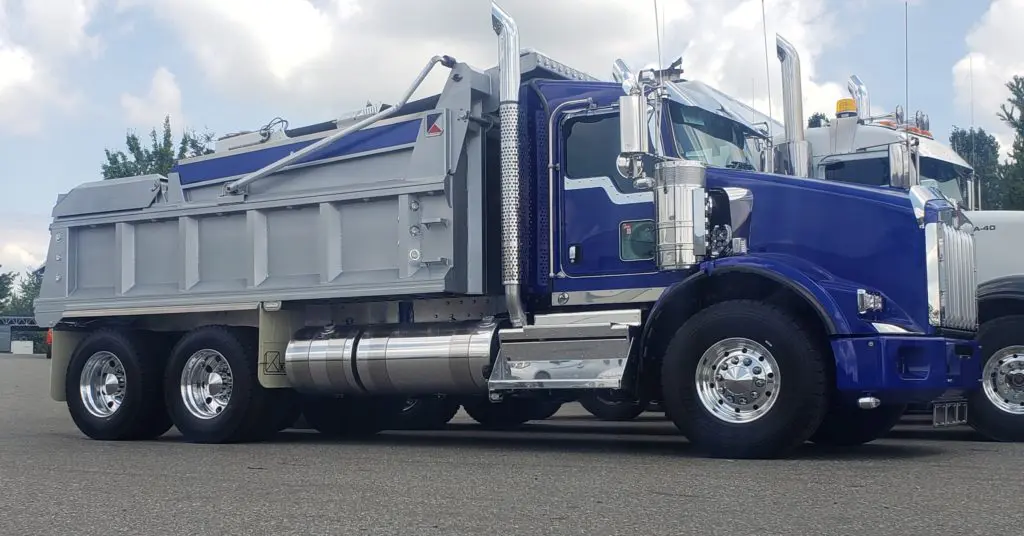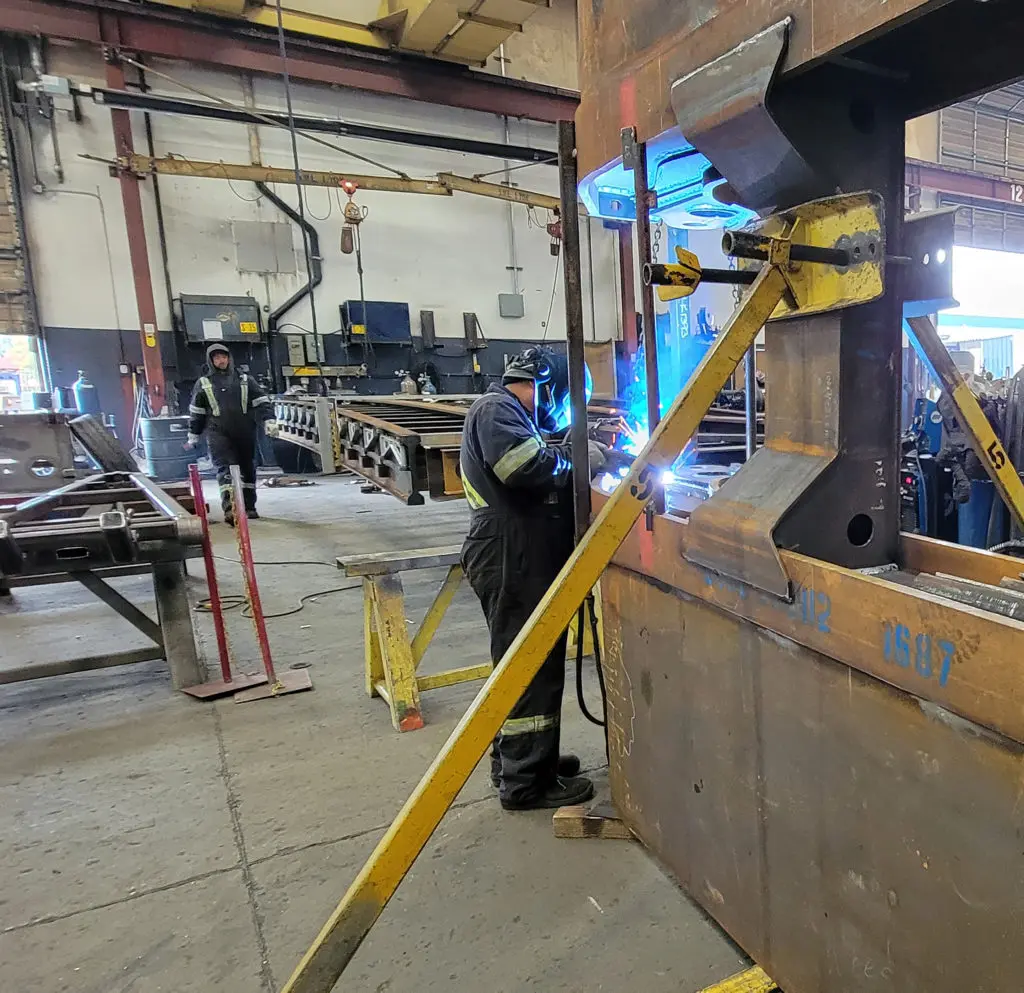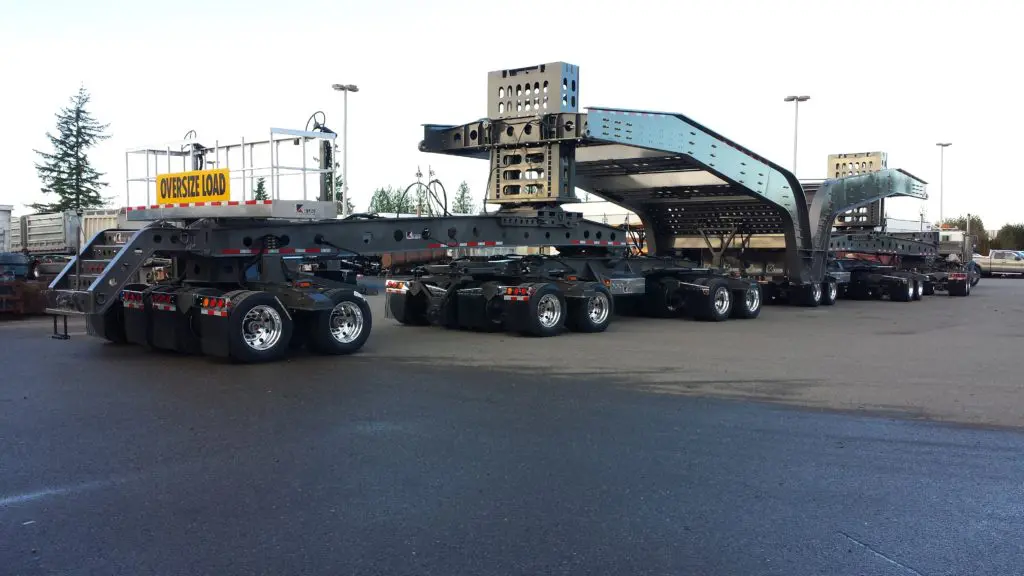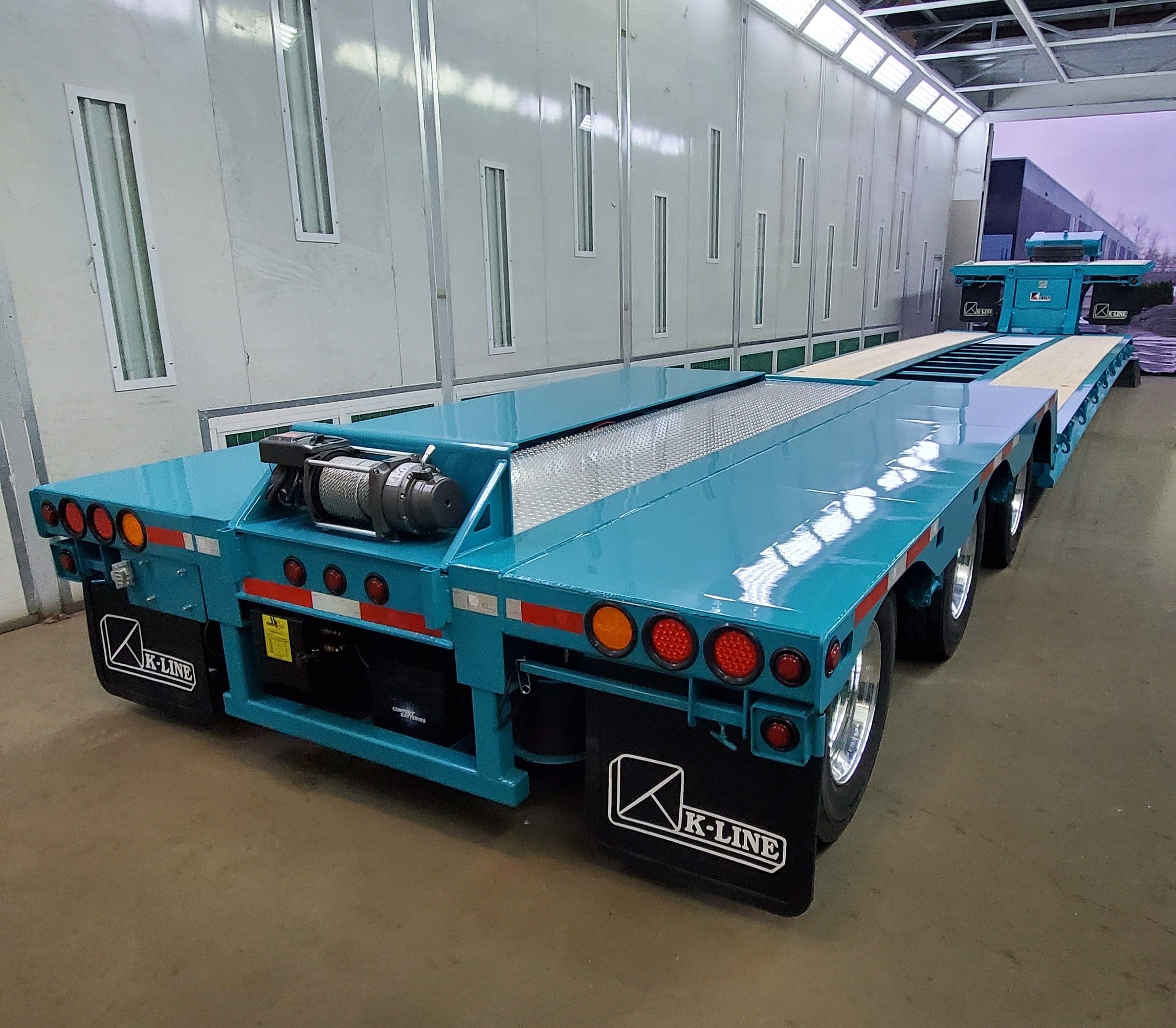K-Line Trailers Gains Up to 15% Productivity With Metal-Cored Wire
At K-Line Trailers Ltd., innovation and experience set the foundation for a company known for its unique equipment solutions. Engineers work directly with customers to design trailers to their exact specifications for industries ranging from wind power to mining and more.
“K-Line has adapted over the years, and we’ve noticed there’s a niche in the market for very specific solutions,” says Rob Hinze, operations manager. “We build the trailer just for the customer and I believe that’s why we have the success we have now.”
Starting as a small shop in the suburbs of Vancouver in 1994, K-Line Trailers moved to a facility twice the size only two years later. It has since expanded three more times in that same location, to what is now a 100,000-square-foot facility housed on 13 acres. Its workforce has grown incrementally with the space, starting with 25 welder fabricators and growing to 150 employees on the shop floor. Another 90 employees staff the engineering department and front office.

The company specializes in end-dump, truck transfer and multi-axle trailers, among others.
Driven by tight deadlines, K-Line Trailers makes every effort to streamline its welding and trailer fabrication processes. Part of that is looking for continuous improvements, which led them to try a new filler metal from Hobart — the FabCOR® Edge™ XP metal-cored wire. The result has been higher productivity with lower costs.
Behind the scenes
K-Line Trailers prioritizes its customers’ expectations every step of the way — from design to production. According to Hinze, the company builds its trailers in stages to meet productivity demands and stay on track for timely delivery. That’s important because contracts for trailers can require significant labor to complete, sometimes tens of thousands of man hours. With an average of 45 jobs on the shop floor at any given time and an annual production of 500 to 600 trailers, there is no room for downtime.
Following strict quality controls is also key to avoiding unnecessary rework of defects that could impact productivity. The company’s welding processes meet the requirements for the Canadian Standards Association (CSA) W47.1 Fusion Welding of Steel Company Certification set forth by the Canadian Welding Bureau.

“Even though it’s not mandated for the transportation industry, we decided to go that route to keep our quality standards high for our customers,” says Hinze. “And it’s a good reference for us to lean on in certain applications. It gives us the right information to execute the job correctly.”
But when welding operators began seeing issues with their previous metal-cored wire, it became apparent that it was impacting productivity.
“Our Senior Welder Jeremy Brawn noticed there was a lubricant buildup on the wire,” says Hinze. “It was plugging up the welders’ welding gun liners and causing burnbacks in the contact tips.”
Hinze also observed welders using only a portion of the wire on the spools, leaving them a quarter or half full. When asked about it, the welders explained that the wire was defective, plugging up liners and crossing over — issues that made it difficult to stay productive and produce high-quality welds.
After the same issue occurred with multiple lots of the wire, Hinze and his team knew it was time for a change.
Making the move
After learning about the FabCOR Edge XP metal-cored wire, Hinze decided to trial it. He and his team of welders, including Brawn, tested the wire against several competitive metal-cored wires to gauge its efficiency and overall performance. They also wanted to test its weldability: the wire’s arc stability, spatter levels and bead appearance, and how well it appealed to the welders.
The outcome of the trials put the Hobart wire at the top of the list, with one attribute immediately standing out.
“The Edge XP for cleanup was very impressive compared to our previous wire,” explains Brawn. “I found there was less silicon buildup. There was less spatter. So, the ease of cleanup for me was a no-brainer.”

That Brawn immediately noticed the simplified interpass and post-weld cleanup is no accident. Hobart formulated the FabCOR Edge XP to provide best-in-class silicon gathering; the formula helps migrate the silicon to large islands at the centerline of the weld. There, they are easier to identify and remove.
Once K-Line Trailers decided to convert to the Hobart wire, the process moved quickly. They ordered skids of 33-pound spools, staged up the storage area and phased out all their existing metal-cored wire.
“As soon as we ran out of the previous product, we opened the floodgates and let everybody have it,” says Hinze. “The transition was seamless and the level of excitement from the welders when we made the switch was nice to see.”
The welders at K-Line Trailers use the FabCOR Edge XP wire for welding 80% to 90% of its steel trailers, including lowbed and transfer models. As the welders fabricate a trailer, lifts rotate it so they can continue to weld in the flat and horizontal positions recommended for metal-cored wire. For out-of-position welds, welders use another Hobart product — the revitalized FabCO® Triple 7 all-position, gas-shielded flux-cored wire.

Typically, the trailer fabrication using the FabCOR Edge XP wire requires welding T-joints and fillet welds on a wide range of thicknesses — from as small as 3/16 inch up to 6 inches. The balanced arc delivered by the wire is well suited for this range of applications. Hobart formulated it to deliver quality results on a wide variety of joint designs and material thicknesses.
“It’s a really consistent wire. A smooth-running wire. I’ve had no problems with it since we’ve switched,” says Brawn. “It runs clean. Everybody seems to love it.”
Hinze adds, “We have a dedicated pallet for any type of wire that welders are having trouble with. We set it aside so we can identify the lot number. The pallets are empty. We don’t have any problems with it. So that’s a big plus for us.”
Welcome outcomes
By reducing interpass and post-weld cleanup with the FabCOR Edge XP wire, K-Line Trailers has seen a 10% to 15% increase in productivity. Welders have gained additional efficiencies since they no longer have welding liner or burnback issues hindering their arc-on time.
Adding to those improvements, Hinze estimates around a 50% cost reduction for the wire wheels previously used for cleanup.
Brawn continues to appreciate the performance of the wire.
“It’s a lot easier to weld. It’s a lot more consistent than our previous wire was. It seems to burn a lot better,” he says. “Overall, it’s a fantastic wire. I don’t want to go back to anything else.”
Based on the results K-Line Trailers has seen, it seems he won’t have to.



